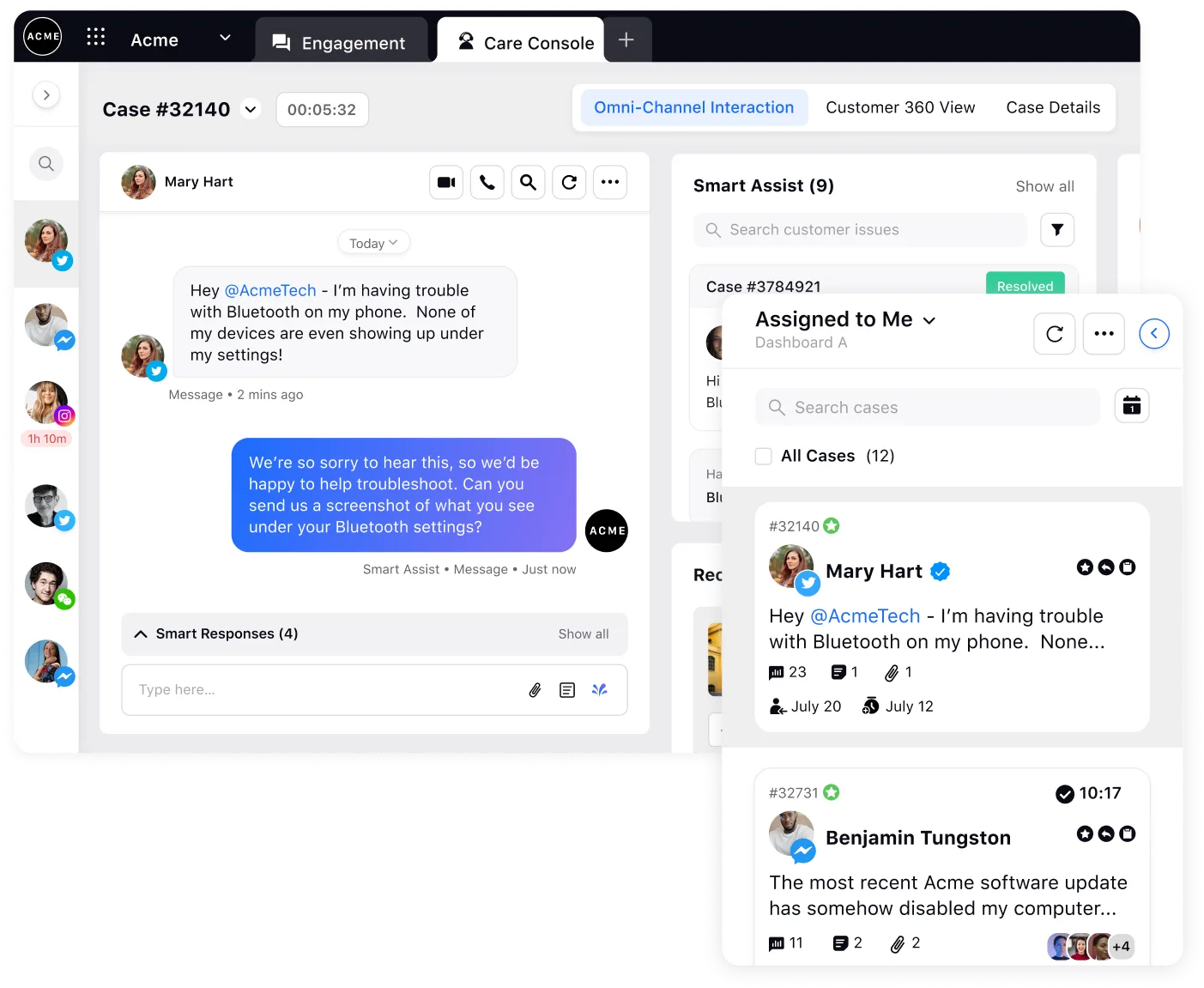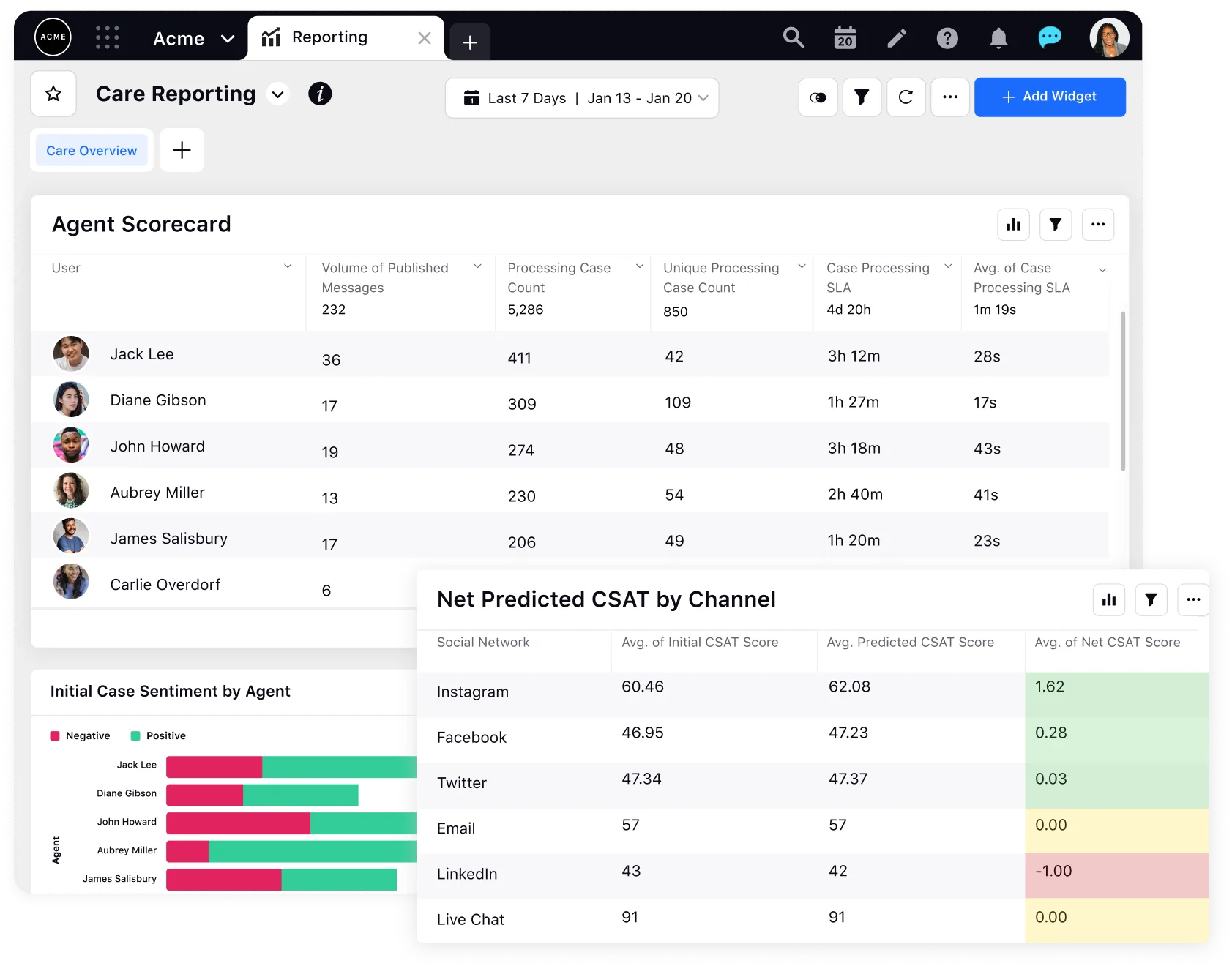Ring, ring! Welcome to the world of call centers — where customer care agents create delightful experiences that make your users happy and satisfied with your brand.
As long as call centers have existed, businesses have determined their operational efficiency with an umbrella term known as “call center productivity”. But how can we measure call center productivity — is it just as simple as knowing a couple of key metrics?
In this blog, we will explore the various aspects of call center productivity, the best evaluation methods, essential metrics to track and practical tips to enhance call center performance.
What is call center productivity?
Call center productivity refers to the degree of efficiency and effectiveness with which a call center operates every day — to handle customer interactions, resolve issues and achieve organizational goals. It can be measured through various call center key performance indicators (KPIs), which provide insights into the performance of agents, efficiency of processes and the productivity of the call center as a whole.
Let's put things in perspective with an example.
Consider two call centers, A and B, both equipped with 50 agents each.
Call center A's agents collectively resolve 500 support tickets in a day
Call center B's agents handle an impressive 1,000 total support tickets
At first glance, it appears that call center B is more productive. But, hear us out.
What if, in call center A, one agent skillfully resolves three tickets within an hour, while another agent tackles one high-stakes ticket that has a substantial impact on revenue generation?
This is to say, productivity isn't measured with just one or two metrics.
So, what is the best way to measure call center productivity?
The best approach to measuring productivity includes a combination of quantitative data and qualitative call insights.
Quantitative data involves numerical metrics that provide concrete performance figures.
Qualitative insights involve gathering feedback from customers, agents and supervisors to gauge the quality of interactions and customer satisfaction.
What are the most important metrics for measuring call center productivity?
Let's delve into a concise compilation of call center metrics that play a vital role in assessing agent productivity.
First call resolution
First call resolution (FCR) focuses on the number of customers whose issues were successfully resolved during their initial call, indicating your support team's efficiency.
How to calculate FCR: (Number of resolved calls on the first contact / total number of calls) X 100
A high FCR signifies that your agents possess the prowess to assist customers promptly, eliminating the need for follow-up calls or repetitive interactions. In cases where the issue remains unresolved after the first call, customers might need to call repeatedly, consuming more of your agents' valuable time.
Learn more: Tips to improve your call center’s first call resolution
Average handling time
Average handling time (AHT) reflects the amount of time call center agents dedicate to customer interactions and engagements.
How to calculate AHT: (Total talk time + after-call work time) / total number of calls
A low AHT indicates that your agents are adept at managing their time during calls and efficiently resolving issues, leading to heightened productivity.
However, maintaining high-quality customer service and providing seamless customer experiences should remain the top priority even when focusing on reduced handling times.
Call abandonment rate
The term "abandoned calls" refer to the ones that go unanswered or are missed due to various reasons:
Callers disconnect because of lengthy IVR conversations/high wait times for human agents
Callers wait in the queue but disconnect before they can talk to an agent due to previous unsatisfactory experiences
Callers wait in the queue but find answers through self-service portals before they talk to an agent
How to calculate call abandonment rate: (Number of calls abandoned / total number of incoming calls) X 100.
A persistently high abandonment rate necessitates a careful examination of your processes, tools and resources. You might have to consider optimizing operations, upgrading tools, hiring more in-house agents or even the possibility of outsourcing entire teams to tackle this issue.
According to industry standards, a call abandonment rate of 2% is considered excellent while a 5% rate is considered acceptable.
Customer satisfaction levels
The customer satisfaction (CSAT) score is derived from customer feedback gathered through a post-call survey, where customers are asked to rate their resolution experience on a scale of 1 to 5.
How to calculate CSAT: (Number of satisfied customers / number of customers who responded to the survey) X 100
This customer-centric metric holds immense value as it provides a first-hand evaluation of your service from the customers themselves. It places significant importance on your customers' perception of the resolution quality. A soaring CSAT score essentially signifies that your agents are excelling in delivering effective solutions.
Net promoter score
Net promoter score (NPS) gauges customer loyalty by asking customers how likely they are to recommend the company's services to others.
How to calculate NPS: Percentage of detractors - percentage of promoters
The customers that give high scores (9-10) are considered promoters, while detractors are the participants that give a score of 0-6. NPS helps businesses assess their overall customer satisfaction and identify potential brand advocates, making it a powerful tool for enhancing customer experiences and driving growth.
How to measure productivity accurately?
Now that we've discussed all the essential metrics related to call center productivity, let's learn more about the ways we can accurately calculate and understand call center productivity.
1. Utilize the call center productivity formula
To obtain a high-level view of your call center's productivity, employ this formula:
Call center productivity = (Total number of resolved calls / total number of handled calls) X 100.
The above-mentioned formula helps calculate the percentage of resolved calls against all calls that were handled by your team, allowing you to quickly assess your efficiency in resolving customer issues.
2. Implement call center analytics software
Utilize advanced call center analytics software to monitor real-time KPIs, automate data collection and generate comprehensive reports. This software enables decision-makers in the support process to identify areas for improvement more efficiently. With robust analytics and reporting solutions, call center managers can measure and track key performance indicators (KPIs).
3. Integrate customer feedback
Incorporate customer surveys for feedback and sentiment analysis tools to gather qualitative insights. Analyzing customer feedback helps understand pain points, agent performance and areas where service can be enhanced.
AI capabilities can also play a crucial role in understanding customer sentiments, trends and feedback across different channels. In fact, AI-driven sentiment analysis helps your call center determine customer satisfaction levels and identify action plans to improve the support experience.
4. Schedule regular performance reviews
Conduct regular performance reviews with agents to discuss their KPIs, provide constructive feedback and set achievable goals. Training sessions tailor-made from your agent performance scorecards combined with personalized guidance can improve agent performance significantly.
5. Weigh against industry standards with benchmarking
Compare your call center's productivity metrics against industry benchmarks to gain insights into your performance relative to competitors. Competitive benchmarking can help identify areas where you and your team might have scope for improvement.
5 Tips to improve your call center productivity
Now that we’ve talked extensively about productivity and how we can measure it, here are some of the best, proven ways to improve your call center’s productivity standards.
1. Enhance your self-service options
A study by Harvard Business Review indicates that 81% of customers prefer to find answers by themselves.
Strengthening your customer self-service not only earns you the title of a customer experience champion — but also grants your support team the freedom to tackle critical and high-impact support tickets; it's a win-win!
Here are some valuable tips to set up a successful self-service workflow:
Craft an informative FAQ page or knowledge base
Leverage automation technology (such as chatbots/voicebots)
Monitor and update your self-service portals periodically
Make agent intervention available for complex issues
2. Embrace omnichannel support
To outshine your competitors, delivering exceptional customer service and experience is key. One way to achieve this is being available to your customers wherever they may be, through.

Train your teams to handle communication across various channels such as phone calls, emails, chat, messaging apps and other relevant platforms. Upskilling your team with omnichannel exposure can help you deliver consistent support across your active channels, significantly elevating the quality of customer service you provide.
3. Equip your agents with a cutting-edge tech stack
A powerful call center solution empowers your agents to deliver their best performance and complements your call center's productivity efforts.
You can boost call center productivity with a range of advanced features such as call tagging, filtering, call forwarding, queue management and advanced analytics. These functionalities work in perfect harmony, creating a productive and streamlined support environment.
4. Continuous monitoring and training
You might put in a lot of effort to improve the quality of customer service in your call center — but without rigorous progress tracking, you might end up at the same place you started.

While analyzing the analytics within your call center software is essential, taking decisive action based on the insights is even more critical. By gaining visibility into agent performance in calls, you can identify precise areas for enhancement and create customized training modules that result in measurable improvements.
5. Encourage employee engagement
Engaged agents are more likely to deliver better customer service. Foster a positive work environment and recognize and reward agent achievements periodically. In addition to that, you can also involve employees in decision-making processes and seek their input on operational improvements to further boost engagement levels.
Final thoughts
Call center productivity has become a key metric especially after the pandemic hit — since teams have been struggling to keep up their quality and efficiency while working in a hybrid setup.
However, well-equipped call center software can significantly boost your call center productivity by empowering your agents to provide better quality of customer service, setting you up for long-term success.
If you're looking to take your call center to the next level, Sprinklr Service is one of the industry's best call center solutions that can help you streamline operations, boost agent productivity and elevate customer satisfaction. Powered by the world's only unified customer experience management platform, Sprinklr Service provides you with business-critical call center capabilities such as:
A unified agent desktop for agents to manage all call processes from a single platform
Fully customizable dashboards with role-based access control
Extensive call center reporting and analytics
AI-powered insights to improve your customer conversations and call center operations
Interested to know more?
START A FULL-FEATURED FREE TRIAL
Frequently Asked Questions
It is recommended to measure call center productivity regularly, at least every month. Also, different productivity metrics might need to be tracked at different intervals – for example, call-related metrics like handling time and abandonment rate need to be tracked constantly, while customer-related metrics such as CSAT or NPS are tracked at a more relaxed interval.



